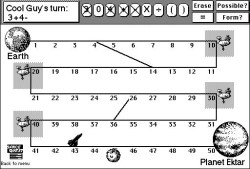My current research interests revolve around web design, usability, and accessibility. Some areas I've previously done research in, and still maintain an interest in, include groupware, education, healthcare, information visualization, and user interface toolkits.
Web Design and Usability
In the field of web design, a common focus of mine is on methodologies and process improvement: how can we maximize the usability of a website, while optimizing costs and minimizing risks? I'm also very interested in the development of design guidelines: how will each design choice affect the usability of a website; how can we continue to improve navigation, layout, and interactive processes? These are central concerns in my book, Usability for the Web.
Automated Testing
I'm currently deeply involved in projects examining how to automate the evaluation of website usability and accessibility. With the enormous number of websites being created daily, and their growing size and complexity, some aspect of automated evaluation is a necessity in order to be consistent and complete in catching problems. Automation saves tremendous amounts of time for the designer and evaluator. Already, automated testing is a standard part of the quality assurance process and needs to extend to usability.
Web Accessibility
I've become heavily involved in web accessibility and formed RetroAccess to provide consulting and automated testing services to improve the accessibility of websites. Almost everyone will periodically encounter situations in which they'll appreciate greater accessibility of websites, and the vast majority of us will have some sort of disability sometime in our lives. Accessibility has been frequently neglected in web design, but everything we accomplish in this domain will make a difference, immediately.
Groupware
I worked for several years doing research on groupware, enabling people to collaborate online, with tools like videoconferencing and collaborative editors. My emphasis was on collaborative drawing tools that enabled people to sketch ideas conversationally, as they might with cocktail napkins. Conversation is a particularly challenging form of collaboration that requires extremely transparent user interfaces and rapid, seamless interaction.
Education
 In education, I've done a variety of projects, including online learning, project-based science education for children, technical training for adults, and assisting with a study of motivation, choice, and personalization in children's educational games. In education projects, I like to stress the importance of clearly laying out your learning objectives and making sure any computer application directly addresses those objectives. I also feel it's very important to apply multiple instructional strategies without favoring one approach exclusively.
In education, I've done a variety of projects, including online learning, project-based science education for children, technical training for adults, and assisting with a study of motivation, choice, and personalization in children's educational games. In education projects, I like to stress the importance of clearly laying out your learning objectives and making sure any computer application directly addresses those objectives. I also feel it's very important to apply multiple instructional strategies without favoring one approach exclusively.
User Interface Toolkits
In user interface toolkits, my interest has been in enabling software developers to more quickly and effectively develop user interfaces. In most contemporary software, user interface development constitutes the majority of the programming effort, yet support for this aspect of coding lags far behind. I've worked on simple methods of annotation for code specification, constraint-based systems, and collaborative screen layout tools.
Healthcare
In healthcare, I've worked on a variety of healthcare industry websites, including specifically a fascinating B2B online marketplace for pharmaceuticals called RxProfit.com. My deepest work however has been in the usability of computer-based patient records, where I was involved as the user interface designer on a product called HealthReturns. This domain has fascinating problems in processes, terminology, visualization, the quantity and complexity of record-keeping, and the rapidity with which the user interface needs to be successfully navigated.
Information Visualization
Finally, information visualization is intellectually behind much of graphical user interface design. How do we present complex information in a way that people can easily use to extract the conclusions they need? I've had a steady interest in this over the years, including work on algorithm animation and experiments on the interpretation of diagramming techniques.